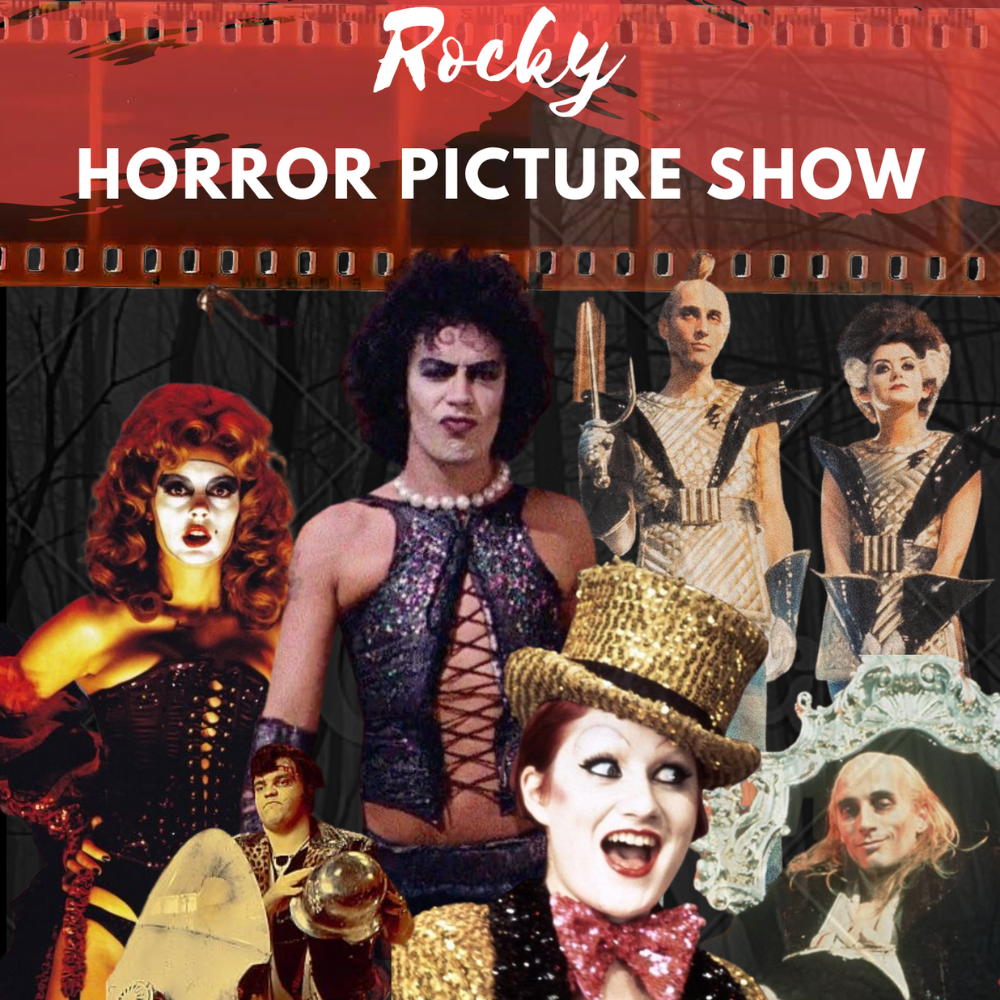Please visit response.fsu.edu for official FSU updates and resources.
Rocky Horror and Queerness

With its outlandish characters, satirical plot, and unapologetic queerness, The Rocky Horror Picture Show became a cult classic after its release in 1975. The musical film, which isn’t as scary as it is campy, was created as a spoof of B-horror movies that usually feature far-fetched plots, mediocre acting, and low budgets. The film stars Tim Curry in his breakout role as Frank N. Furter, a cross-dressing mad scientist who lives in a Victorian Gothic-style castle. The plot itself is reminiscent of Frankenstein; Frank N. Furter succeeds in creating a sentient yet incredibly airheaded man named Rocky, who is used mostly as a boy toy. However, the film’s inciting incident occurs when newly engaged Brad and Janet get a flat tire and stumble upon Frank N. Furter’s castle. Here, they are acquainted with the goofy characters inside and witness Rocky’s creation. Brad and Janet represent everything that Frank N. Furter does not: repression, chastity, and social conformity. As the plot progresses, Brad and Janet succumb to their deepest desires and give into the flagrant lifestyle of the castle’s residents.
Rocky Horror’s initial reception was quite negative, but the film garnered success after becoming a midnight movie, or a low-budget film played by TV stations late at night, sometimes with a host delivering humorous asides. The initially negative response to Rocky Horror isn’t surprising since it’s a satire of heteronormativity and puritanical values. The American sexual revolution occurred between the 1960s and 1970s, so Rocky Horror was released during a dramatic shift in how society views sex and sexuality. Further, the American gay rights movement officially began in 1969 with the Stonewall riots, so Rocky Horror was released during a time when queer rights were at the forefront of political conversations. While the LGBTQ+ community had a long fight ahead of them, Rocky Horror’s progressive perspective on queerness was seen as a win — even if straight people didn’t really know about it.
From its inception, Rocky Horror has been magnificently queer — and so have its fans. Members of the LGBTQ+ community across multiple generations have gravitated to Rocky Horror because the characters and plotline are odd and outlandish, which is exactly how many queer people see themselves as a result of heteronormativity and homophobia. But by making these quirky characters lovable and attaching a certain positivity to being a weirdo, Rocky Horror uplifted queer people, and those who just generally fell outside the norm, instead of putting them down. Further, queer representation was definitely worse in 1975 than it is now, so Rocky Horror was the first time that many people saw someone like them on screen that wasn’t mistreated for their sexuality or disregarded for gender norms. Representation matters and this made the film revolutionary.
Rocky Horror was made as a spoof of B-horror movies, but it is also a spoof of LGBTQ+ stereotypes. For instance, Frank N. Furter is a crazy, hypersexual cross-dresser, Brad and Janet are “victims” of Frank N. Furter and the other flamboyant personalities in his castle, and all the castle residents are quite literally from another planet. But by leaning all the way into these stereotypes, they take on a consciousness that creates an element of subversion. The result of this is a massive queer following that feels seen and heard in a real way despite the outlandish nature of the film.
Despite being released nearly half a century ago, Rocky Horror still has a strong fanbase. Keeping true to its midnight movie origins, it’s an unspoken rule that Rocky Horror still is shown at midnight at theaters. A tradition unique to Rocky Horror is shadow casting, which is when performers lip-sync to and act out the film on stage as it's happening with generous amounts of audience participation that includes shouting at specific times, singing along, and special props. Shadow casting evolved out of an organic phenomenon first observed when audience members began to shout back to the screen and audibly react to the film shortly after its release. The heavy audience participation involved with showing Rocky Horror is a major factor in its long-term success and cultural significance. Rocky Horror was also recently remade in 2016 in which trans icon and professional actress Laverne Cox played Frank N. Furter. Tim Curry even made an appearance as the criminologist. The remake had a budget of $20 million, whereas the original only had a budget of $1.4 million. Few films reach the level of acclaim and longevity of Rocky Horror, and its impact on the queer community both then and now is extraordinary.
Writer: Kendall Cooper
Artist: Alyssa Giaccone



